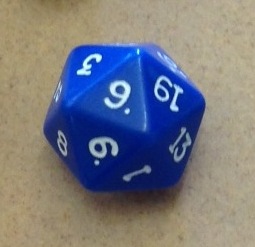I’m using a guided math model more often this year. To be honest, I’d say that I’m using more of an adapted guided math model because it’s still and will always be a work in progress. Similar to guided reading, an emphasis has been placed on meeting with smaller student math groups. After attending a few different math sessions with Laney Sammons last year, I continue to refine the model within my own classrooms. I’m currently utilizing the model approximately 2-3 times per week. Students are meeting in three different groups throughout the 60 minute math block. Generally, one of the student groups is with the teacher, while the other groups are working on various activities throughout the room.
I understand and see the benefits of having a guided math model, although I’m a bit unsure of the effectiveness of the other groups that aren’t directly with the teacher. That uncertainty led me to research few options for the other math groups. I don’t want their time to seem wasted and I believe there needs to be some type of documentation embedded. What could, or what should the other groups be doing? This year I’ve experimented with a few different options and have found the options below to work with my group of students.
Adaptive apps – Programs like MobyMax, IXL, and Scootpad can be used to bolster skills that need strengthening. This station is usually fully supplied with whiteboards for students to show their work. Many of these apps are free and can also be used at home for more practice/extension. An 8 – 12 minute station can be a perfect amount of time for theses types of apps. The apps also provide documentation that indicates questions correct/incorrect and progress made. I’ve compiled an Edshelf this year to showcase some of the apps that my students use during guided math.
Journal Activity – Students follow a specific journal prompt given by the teacher. The journal entry is most likely related to the standard that’s being explored. Students paste certain artifacts in their journal, such as work, explanations, and sheet-based manipulatives to show their mathematical thinking. The math journal could also be used as a reflection piece. For a large list of possible journal prompts click here.
Games – Games can be a great way to practice math skills and encourage collaboration with peers. Dice and playing cards can play a role here as many elementary games use these and multiple outcomes exist.
Puzzles – I generally have students work in pairs or groups to complete these types of math puzzles. I tend to use an envelope system. Students complete the puzzle, take a picture of it using the iPad and then put the puzzle back in the envelope. Using Tarsia has opened up many different possibilities for using puzzles during math groups. This has been a staple station during an algebra unit as students match the equation with variable solutions.
Educannon – At first glance this looks like a flip classroom program. I actually heard about this from Mary and I’m using it this year to reinforce math skills at home or in stations. Here’s a quick subtraction Educannon that I made for a second grade classroom.
Content Creation – Students use the apps Educreations, Haiku Deck, Explain Everything, and others to create digital content that can be uploaded to the web later. Moreover, these types of activities can be included in a student portfolio system for later use. Students follow a rubric to create a presentation that explains (example) a particular math concept. This station is sometimes used during consecutive days because of the time commitment needed to produce a quality product. This is by far the most requested math station that I use. The class has informally dubbed this the Explanation Station.
QR Code /Augmented Reality – Students complete activities related to the concept being taught and check their answer by scanning the QR code. I’m experimenting more with augmented reality this year and am looking for ways that students can be part of the creation process.
Math Manipulatives – Manipulatives can be powerful in the learning process. Specifically, I’m thinking of pattern blocks, fraction tiles, base-ten blocks, etc. Many of these items can be accompanied with a sheet asking students to show what they created/explored. Giving time to explore and come to constructive conclusions can also aid in foundational understanding. The Virtual Manipulatives app can be helpful for this station.
Math Literacy – Yes, reading and math can be combined! I’m currently compiling books in one of my stations that are dedicated to the current math strand that we’re emphasizing. The Sir Cumference series currently resides in this math station as well as many Greg Tang books. Many of the books come with questions that students could answer. I think this station has a lot of potential I just need to expand my inventory and find some type of Scholastic discount.
* Photo credit: Adapted from Rojessa Tiamson-Saceda (EQuALLS2 Project)
How do you use guided math stations?



